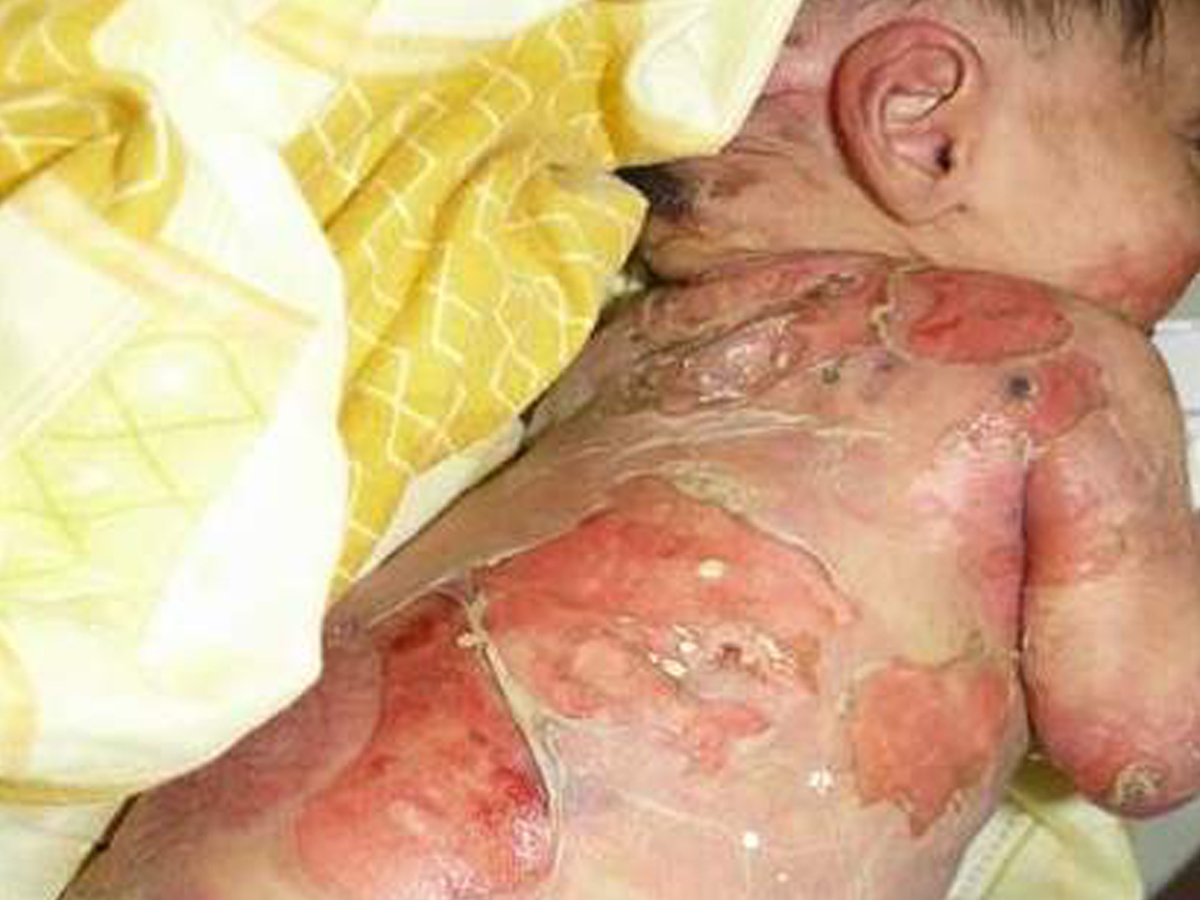Epidermolysis Bullosa
Epidermolysis Bullosa (EB) is a rare genetic condition characterized by extremely fragile and blister-prone skin. People with EB have skin that is so fragile that even minor friction or trauma can cause painful blisters, sores, and wounds. EB is caused by mutations in genes that are responsible for the structure and function of the skin, leading to a lack of structural proteins that hold the layers of skin together.
There are several types of EB, each with varying severity and symptoms. The main types of EB include:
- Epidermolysis Bullosa Simplex (EBS): EBS is the most common form of EB and is characterized by blistering in the superficial layers of the skin, primarily the epidermis. Blisters and erosions are typically confined to areas of friction.
- Junctional Epidermolysis Bullosa (JEB): JEB affects the junction between the epidermis and the dermis, causing severe blistering and scarring. This form of EB can also affect the mucous membranes, leading to complications in the mouth, throat, and gastrointestinal tract.
- Dystrophic Epidermolysis Bullosa (DEB): DEB is a severe form of EB that affects the deeper layers of the skin, causing extensive scarring, blistering, and skin abnormalities. This type of EB can also cause other complications, such as esophageal strictures and joint contractures.
- Kindler Syndrome: Kindler Syndrome is a rare form of EB that combines features of EBS, JEB, and DEB. It is characterized by blistering, photosensitivity, and increased risk of skin cancer.
Symptoms of EB may vary depending on the type and severity but can include:
- Blisters and skin erosions
- Scarring
- Thin and fragile skin
- Difficulty healing wounds
- Nail dystrophy
- Difficulty swallowing (in severe cases)
- Dental problems
- Hair loss
- Anemia
There is currently no cure for EB, and treatment focuses on managing symptoms and preventing complications. This may involve wound care, bandaging, pain management, nutritional support, physical therapy, and other supportive measures. People with EB may require close monitoring by a multidisciplinary healthcare team, including dermatologists, wound care specialists, nutritionists, and other specialists, to provide comprehensive care and support.
Living with EB can be challenging, both physically and emotionally, but with appropriate care and support, quality of life can be improved for individuals with this condition. Research into potential treatments and therapies for EB is ongoing, offering hope for improved outcomes and quality of life for those affected by this rare disease.




